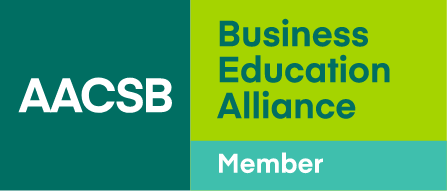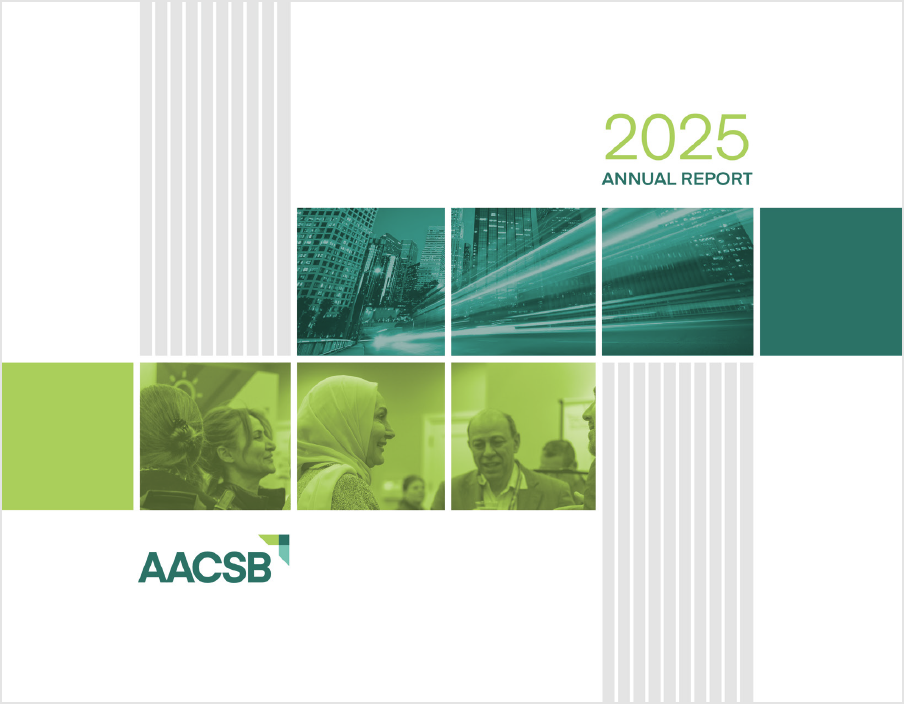Rethinking How AI Is Taught in Business Schools
- Concerns about ethics, accountability, data privacy, and bias raise questions about how and why artificial intelligence should be used in workplaces and organizations.
- At Chicago Booth, students learn to think critically about the broader effects of AI by considering real-world case studies where AI has both positive and negative effects.
- The school’s Center for Applied Artificial Intelligence hosts events where industry experts discuss the impact of AI and where students are exposed to cutting-edge applications in social sciences, medicine, and education.
Artificial intelligence (AI) is no longer the future of business; it’s the present. From turbocharging innovation to streamlining operations, AI is transforming industries.
But this transformation isn’t without challenges. Concerns about ethics, accountability, data privacy, and algorithmic biases are raising urgent questions about how this technology should be used and toward what end.
Business schools must rise to these challenges. We must prepare the next generation of leaders to harness AI’s potential while navigating its complexities and using it with clarity, integrity, ethics, and purpose. This requires us to treat AI not as a purely technical construct, but as a lens through which students can explore how to confront and solve society’s most critical issues.
So how can we do this?
Rewriting the Curriculum for an AI-Led World
The first thing we must do is acknowledge that students are already using common tools such as large language models (LLMs) and deep-research platforms to summarize articles, generate code, and write first drafts.
My belief is that this is a positive change—after all, the next generation of professionals should know how to capitalize on AI-driven efficiency. But it means that faculty must adapt their teaching styles to focus increasingly on the value of critical thinking. Students need to realize how important it is that they take the final step that AI can’t—reflecting on meaning.
They also must learn how to judge the quality and veracity of AI-enabled work by asking key questions: Is this answer accurate and comprehensive? Has the AI tool understood the nuance of the task? Are there indicators of bias in the output? Are there privacy concerns around what has been delivered?
At the University of Chicago Booth School of Business, we address AI-related issues through the lens of the Chicago Approach, a framework that helps students define problems, ask sharper questions, and develop better solutions informed by a multidisciplinary perspective. Instead of teaching AI in a silo, we address AI-related issues across all disciplines and industries, from marketing to asset management.
Students need to realize how important it is to take the final step that AI can’t—reflecting on meaning.
Our Center for Applied Artificial Intelligence (CAAI) is largely responsible for developing the ecosystem that embeds AI into the student experience. To create a landscape where students can investigate problems from multiple angles, the center takes several approaches:
- It anchors the Applied AI concentration that we recently introduced into our MBA program. The concentration blends technical and analytical training with opportunities for students to examine the ethical and organizational implications of AI in real-world settings.
- Throughout the year, the center hosts workshops that feature industry experts from top institutions and companies. After listening to leaders who are operationalizing AI within their organizations, students begin to understand both the capabilities and sociotechnical challenges of advanced technology.
- It brings in alumni who share their insights on how AI has emerged and evolved over the course of their careers. Many of these alumni have reflected on how AI has shifted from being a specialized, task-focused tool for innovation into a personalized device for managing daily life. Their observations have sparked thoughtful dialogues around how to democratize expertise and shift the value of human work toward leadership, empathy, and ethical guidance.
- Through its flagship Machine Learning in Economics Summer Institute, CAAI convenes students from around the world to examine AI’s impact on economics and business. The center also hosts other events and conferences that expose students to cutting-edge applications in social sciences, medicine, and education.
- It supports research by providing dedicated funding and embedding pre-doctoral researchers into faculty projects.
Through these opportunities, we prepare our students to become well-rounded leaders with the ability to harness emerging technologies to their full potential.
Taking a Three-Pronged Approach
We also have embraced AI and embedded it within all disciplines by ingraining the three pillars of technology, tools, and impact throughout the whole curriculum.
By discussing technology and tools, we show students what’s happening beneath the hood of AI, including the mechanics of how it works. By focusing on impact, we teach them to think critically about the broader effects of AI, which means challenging AI on its answers, solutions, and capabilities. We want students to understand not only how to use technology to drive success, but also how to scrutinize the output of AI tools.
As part of this objective, we introduce students to real-world dilemmas where AI’s applications and implications are tested in practice. As their knowledge of AI moves from the abstract to the applied, students come to understand not just how the technology works, but how to use it responsibly in pursuit of better outcomes.
As one example, we share the details of a research project we conducted on California’s deployment of the Supplemental Nutrition Assistance Program (SNAP) food stamp program. We studied the way AI was used to generate personalized reminders for eligible recipients who had not renewed their SNAP benefits. The tailored messages worked well, sparking a 20 percent rise in recertifications and generating an increase in overall enrollment.
As the students’ knowledge of AI moves from the abstract to the applied, they come to understand not just how the technology works, but how to use it responsibly in pursuit of better outcomes.
But while the reminders had a positive impact, they also featured potential drawbacks, and students explored these tradeoffs during class discussions. Rightfully, students raised concerns around privacy protection and debated whether the targeted messages to SNAP recipients had negative ethical implications. They asked: Are food stamp recipients comfortable with the knowledge that their personal data is being stored in the database used to train the AI model? Is there a way to balance the benefits of enhanced social support with the disadvantages of increased surveillance?
To help students grapple with these questions, we ran role-play scenarios, held structured class discussions, and performed short-form data-audit drills. Students often proposed solutions such as embracing data minimization to reduce privacy intrusions, requiring recipients to opt into the program, or testing low-data models first. Many students also argued that any benefits that were generated through data collection should flow back to the communities.
The SNAP project showed students that AI is not just about technical capability, but also about judgment, trade-offs, and long-term consequences. In addition, the project demonstrated a broader lesson: Generic models can be powerful, but bespoke, domain-specific systems are often needed to address complex human challenges and use AI to its fullest potential.
Research into the SNAP program is just one example of the projects we’re tackling at our school. Other hands-on research supported by the CAAI has explored how AI is used in hiring, education, healthcare, and justice. Our goal is to generate entrepreneurial ideas that will offer promising solutions to business challenges.
As we share our research results with students, we enable them to look beyond the abstract concepts of AI to view it in its full complexity and understand its broader potential impacts.
Creating Leaders for the Future
Today’s students will go on to shape AI’s role in the real world. Some will lead companies, while others will manage product teams, set policy, or launch startups. Their decisions will have an impact on everything from consumer privacy to capital allocation.
Educating these future leaders is a huge responsibility, and one we do not take lightly. We know how important it is for AI to be entrenched carefully and thoughtfully into business education from the very beginning.
To this end, Booth faculty engage in ongoing dialogues around how to evolve with AI as its presence in the classroom grows. Through workshops, seminars, and peer forums, our colleagues share approaches and learn from one another. Many experiment directly with different models, running course materials through multiple systems to test what works, what falls short, and what students might ask. The goal is not to ensure that professors master every tool but that they create habits of continuous practice and reflection that keep their teaching grounded, current, and collaborative.
By taking this approach, we’re leading by example. We’re guiding our students to stay curious, question assumptions, and have the courage to ask the hard questions in a world where the line between human and machine input is becoming increasingly blurred. We want our future leaders to be not only proficient users of technology, but also thoughtful stewards of AI’s power.






